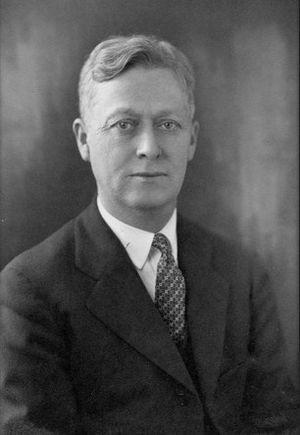C.B. Williams facts for kids
Carrington Bonsor Williams (born October 7, 1889 – died July 12, 1981) was an English entomologist and ecologist. People often called him C. B. Williams or just "C.B." He was very important in studying how insects migrate, how to use statistics in ecology, and how living things are spread across the world.
Contents
Early Life and First Interests
C. B. Williams was born in Liverpool. His father, Alfred, was a banker, and his mother was Lillian. His parents didn't push him into science. But he loved reading about nature and even had his own aquarium.
He went to school in Cheshire. When he was about twelve, during a summer trip, a local doctor showed him and his sister how to find and study caterpillars. This sparked his interest! Later, they went to a meeting of the Lancashire and Cheshire Entomological Society. C.B. became a member, though he later found out they thought they were voting for his dad!
Starting His Career
C.B. won a scholarship to Clare College at Cambridge University. He studied biology there and earned degrees in agriculture and arts by 1911. He met William Bateson, who was also studying caterpillars. Bateson helped Williams get a research job at the John Innes Centre, where he worked for five years. During this time, he also visited the United States to learn about insects that affect farms. He studied tiny insects called Thysanoptera and even helped describe some new kinds.
During World War I, C.B. helped the army by studying diseases. Then, he was asked to help with a big problem in the West Indies. A pest called Tomaspis saccharina was harming sugar cane, which was important for Britain. From 1916 to 1921, Williams worked in Trinidad. He helped put a plan into action to introduce a natural enemy to control the pest.
While in the West Indies, he saw something amazing: his first butterfly migration! Thousands of yellow butterflies flew by every day for two weeks. This made him very curious about why insects migrate.
In 1920, he married Ellen Margaret Bain. He later dedicated one of his books to her, thanking her for her "wisdom in the art of living." They had three sons.
Adventures and Discoveries
In 1921, Williams came back to England. He then took a job in Egypt with the Ministry of Agriculture. His work there was mostly managing things. But he still found time to study insect migration, especially how it affected farming. In 1927, he moved to Amani in Tanganyika (now part of Tanzania). His first task was to build a road and two bridges. He joked that this showed how useful a good entomology training could be!
In Amani, he again saw butterfly migrations. In his second year, he even studied a huge locust invasion that stopped trains! In 1929, he returned home. He then accepted a teaching job at the University of Edinburgh. In 1930, he earned his advanced degree from Cambridge University for his work on "Migration of Butterflies." While in Africa, Williams also met Reginald Ernest Moreau, who was interested in birds. Williams taught Moreau about scientific methods. Moreau later became a famous bird scientist.
Studying Insect Migration
Studying butterfly migration was a huge passion for C. B. Williams. He watched countless migrations himself, especially in warm, tropical places. He also had friends and colleagues all over the world who sent him their observations. He carefully studied and wrote about all this information. Because of his work, he became the world's top expert on insect migration. He solved many puzzles about this topic, which he first wrote about in his 1930 paper. He published a much bigger book on the subject in 1958.
Understanding Nature's Patterns
From 1932 to 1955, C.B. Williams led the insect department at the Rothamsted Experimental Station. Here, he worked with a famous statistician named Ronald Aylmer Fisher. Williams became a pioneer in using statistics to study patterns in biodiversity, which is the variety of life.
For example, he looked at how many different kinds of insects were caught in light traps. He noticed that the numbers often followed a special pattern called a logarithmic pattern. This idea was later used by other scientists. Williams even used this pattern to guess how many head lice people might have. He used information from prisoners in India. He calculated that about 107 people would have only one louse, and the actual number was 106. He famously wrote, "so Nature was only one wrong!"
Even after he retired, he kept working on many different aspects of insect ecology.
Achievements and Recognition
C. B. Williams was a leader in several important scientific groups. He was president of the Association of Applied Biologists, the British Ecological Society, and the Royal Entomological Society of London. In 1954, C. B. Williams became a Fellow of the Royal Society, which is a very high honor for scientists.


